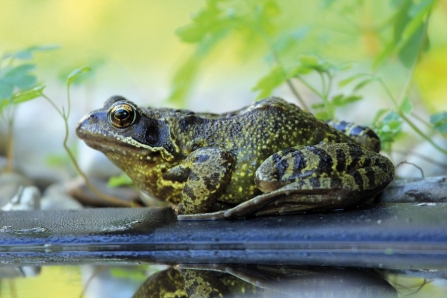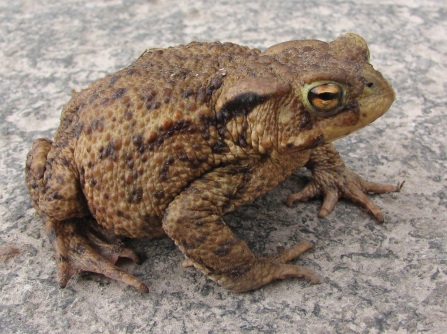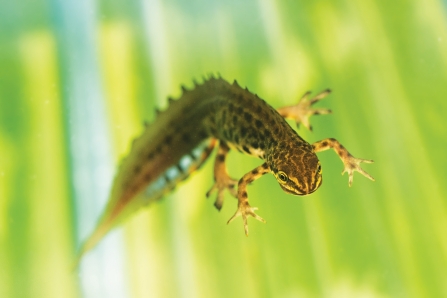As the last frosts dissipate and the longer days linger, life returns to our ponds. My first frog showed itself in mid-March and frogspawn soon followed. As I write this, my garden pond has new life; miniature tadpoles lie amongst the remains of the jelly, gaining sustenance and an energy boost before it disintegrates.
April is for amphibians
Common frog credit © Mark Hamblin

Common frog © Jim Higham
Frogs are the most likely amphibian to be encountered in our garden ponds and they can appear apparently from nowhere, colonising new watering holes as if by magic.
Less common in our garden ponds are toads which can spend long periods of time away from water and often bury themselves in the soil to avoid the worst of the winter cold.

Common toad © Martin Batt
Many garden ponds also have resident newts; usually our smooth newt, which is long and slender with a tapering tail. Occasionally our largest native newt also makes an appearance, and at up to 15cm [6inches] long is certainly an impressive site. Great crested newts, as well as being our largest, get their name from the wavy crest that adorns the males during the breeding season. The crest is displayed in courtship to attract a female.

Male smooth newt © Paul Gunning
Frogs lay their eggs in a mass of jelly, and toads in a string. Newts, however, lay eggs singly. The females take great care to wrap each egg in a leaf, which they do with amazing dexterity using their hind legs.
If you have a pond in your garden or near your home, take a few moments to stop and peer into the depths - you may be surprised by what you see in this watery world. The arrival of my frogs at the start of spring always lifts my spirit and reminds me that wildlife can live alongside us if we give it space and time.

